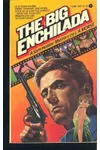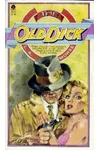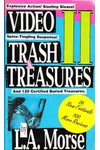Picture a storyteller who spun gritty, hard-boiled crime tales that could make even the toughest detective blush—meet L.A. Morse! This Edgar Award-winning author carved a unique niche in the crime fiction world with his bold, satirical mysteries. From the mean streets of Los Angeles to the cannibalistic moors of 15th-century Scotland, Morse’s stories are as unforgettable as his eclectic life as a sculptor, birdwatcher, and stock market enthusiast.
Born with the initials that echo his Los Angeles roots, L.A. Morse wasn’t just a writer—he was a creative chameleon whose diverse passions infused his work with a distinctive edge. Let’s dive into the life, works, and lasting impact of this enigmatic crime fiction maestro.
The Making of L.A. Morse
Larry Alan Morse grew up in Los Angeles, where he earned two degrees in English literature. His early career was a patchwork of eclectic jobs, from educational television to university administration at the University of Toronto after moving to Canada in the 1960s. It was after extensive travels in Southeast Asia that Morse turned to writing, seeking to craft something 'delicate and sensitive.' Instead, he unleashed The Flesh Eaters in 1979, a gruesome tale of the Scottish cannibal Sawney Bean, proving his knack for defying expectations.
L.A. Morse’s Unforgettable Stories
Morse’s literary career is a thrilling blend of horror and hard-boiled crime. His debut, The Flesh Eaters, is a lurid, pulpy dive into the cannibalistic exploits of Sawney Bean’s clan, described as 'taboo-obliterating' yet 'supremely fun' by critics. This bold start set the stage for his crime fiction pivot with The Old Dick (1981), which won an Edgar Award for Best Paperback Original. The novel follows Jake Spanner, a 78-year-old private eye who dusts off his fedora for one last case, blending humor with clever twists.
Morse’s most polarizing character, Sam Hunter, debuted in The Big Enchilada (1982). Described as a 'Mike Hammer lampooned to an absurd degree,' Hunter is a brash, violent detective navigating L.A.’s seedy underbelly. Its follow-up, Sleaze, doubles down on the satire, with Hunter tackling a case for a magazine editor amidst a whirlwind of vice. Morse also stirred intrigue with An Old-Fashioned Mystery (1984), credited to the mysterious Runa Fairleigh—though many suspect Morse himself penned this playful pastiche.
Known for his gritty prose and satirical edge, Morse’s style oscillates between shocking excess and sharp parody. His ability to reinvent the private detective archetype earned him critical acclaim, even as his unapologetic narratives divided readers. Beyond novels, he explored cult cinema with Video Trash and Treasures, a guide to obscure 1980s films, showcasing his knack for niche storytelling.
Why L.A. Morse Matters
L.A. Morse’s impact lies in his fearless approach to crime fiction, blending humor, horror, and hard-boiled grit. His Edgar Award for The Old Dick cemented his place among mystery greats, while his Sam Hunter novels pushed boundaries, challenging conventions of the genre. Morse’s eclectic life—sculpting, birdwatching over 1,500 species, and trading stocks—mirrors the complexity of his characters, making him a cult figure for fans of bold, unconventional storytelling.
Though he stepped away from writing in the mid-1980s to focus on visual art, Morse’s legacy endures in the crime fiction community, where his work remains a touchstone for those who crave stories with bite. His ability to craft memorable protagonists like Jake Spanner and Sam Hunter ensures his tales still resonate with readers seeking a thrilling escape.
- Born: Los Angeles, California
- Key Works: The Flesh Eaters, The Old Dick, The Big Enchilada, Sleaze
- Awards: Edgar Award for Best Paperback Original (1982)
- Fun Fact: Morse is an avid birder with over 1,500 species on his world list!
Snag The Old Dick and dive into L.A. Morse’s gritty, satirical world of crime fiction!





